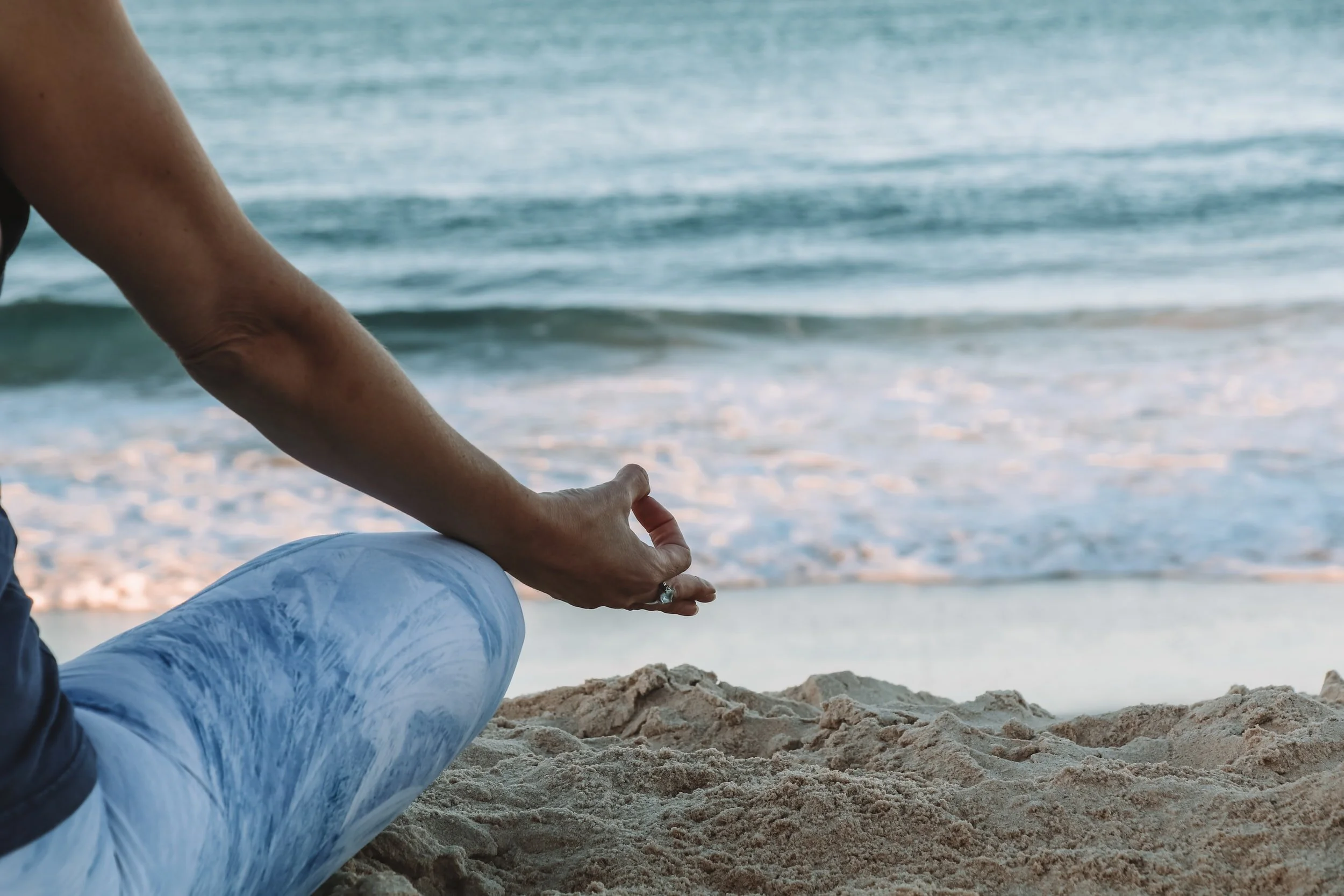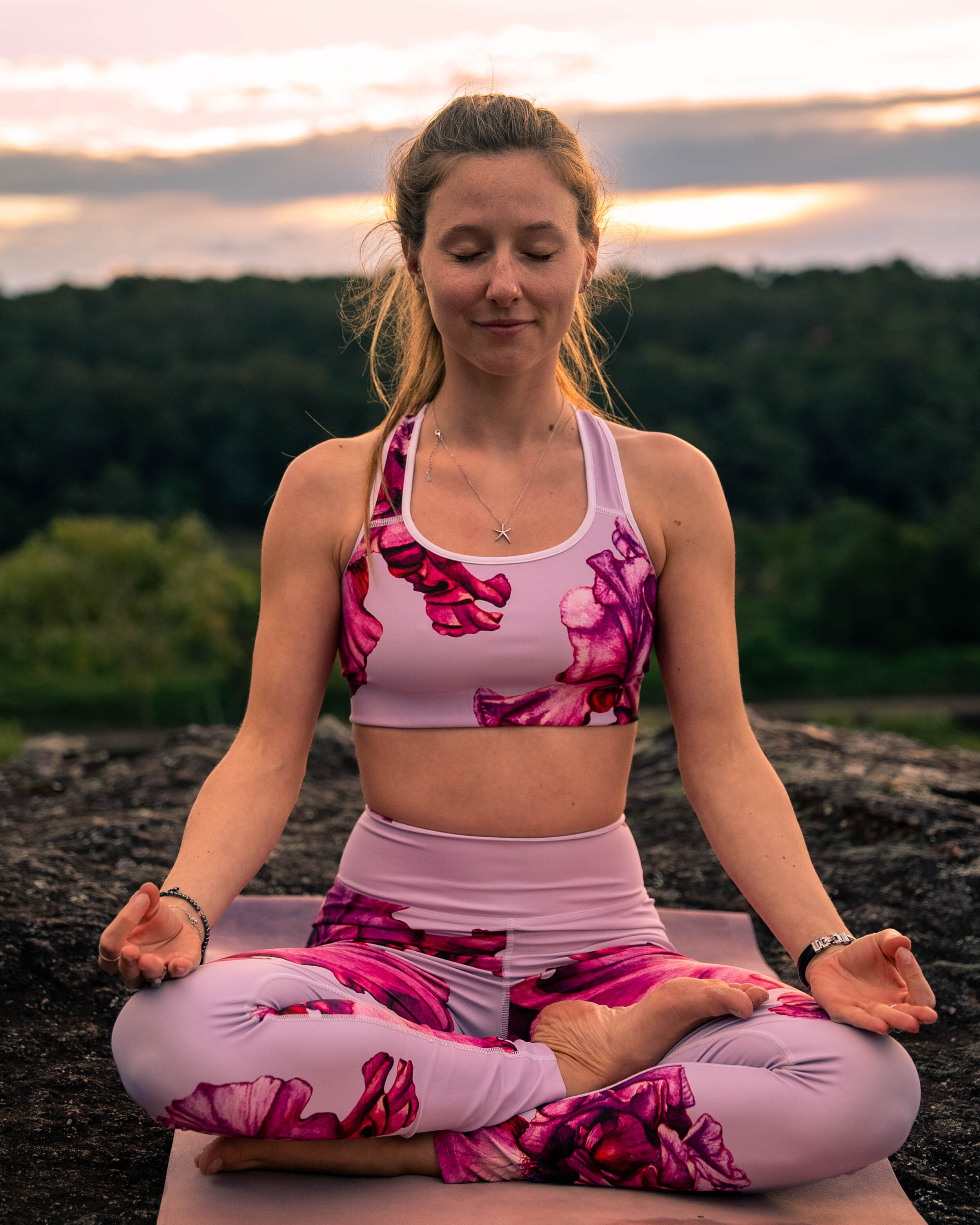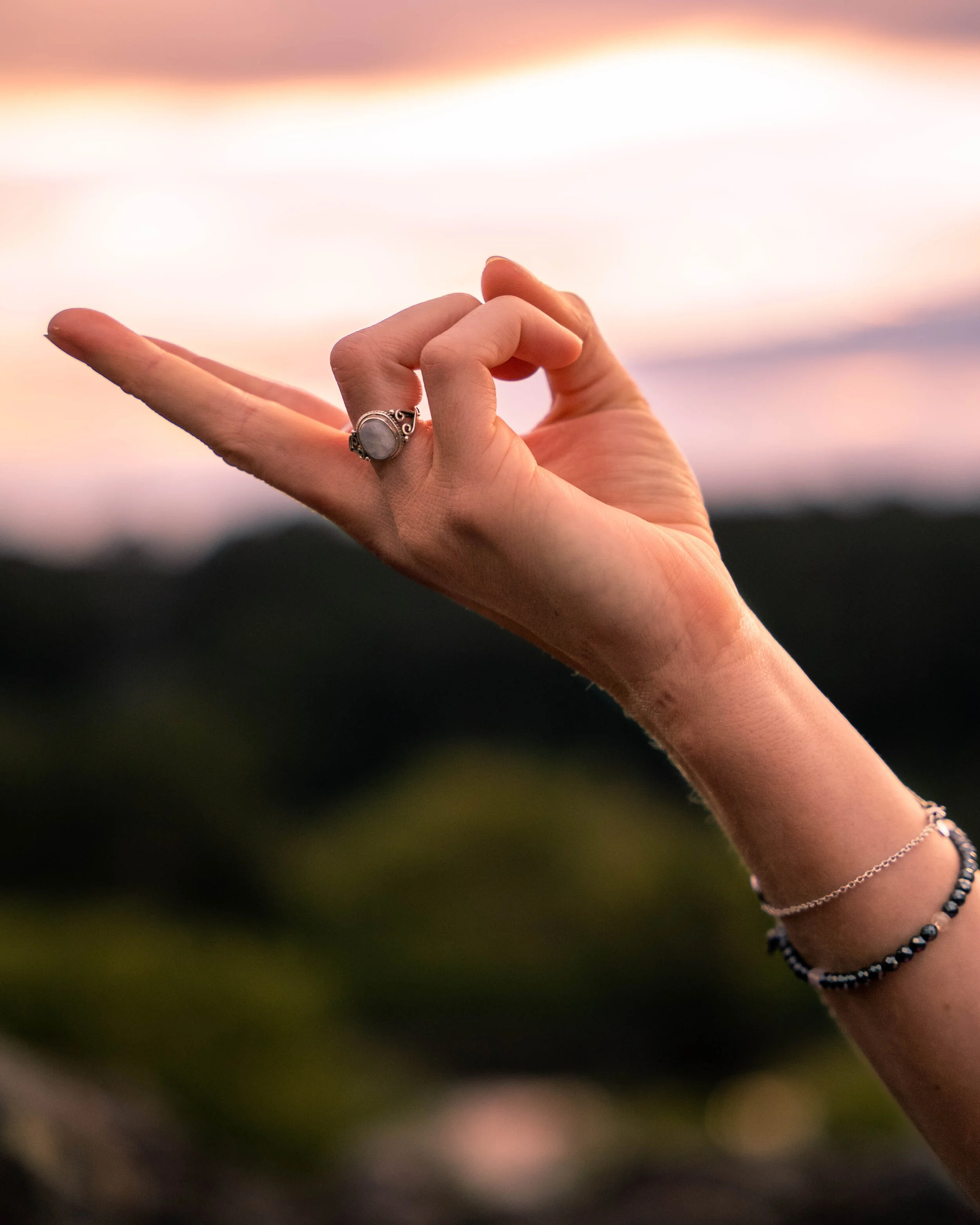Adding Mudras to your practice
In this blog post, you will find out what mudras are and how they can enhance your personal yoga practice. There is a total of 6 different mudras out of 399 mudras, that I hope you will introduce in your own practice.
Mudra, which means" “seal”, “gesture” or “mark” in Sanskrit, is a symbolic gesture practiced with your hands and fingers. When paired in pranayama (yogic breathing exercises), yoga mudras have the ability to stimulate and direct the flow of prana (life force) in your body and influence your overall mood. There are many different mudras, and each of them provide different benefits.
Each finger has a representation:
Thumb: Supreme Soul / Fire
Pointer: Individual Soul / Air
Middle: Ego / Ether
Ring: Illusion / Earth
Pinky: Karma / Water
1. Chin Mudra or Jnana Mudra
The Chin Mudra or Jnana Mudra in Sanskrit, is the gesture of consciousness. It is the most common mudra. It connects us to our higher self, and helps us lift dull energy, creates a more receptive states, calms the mind and brightens the overall mood.
This mudra is good to practice at the start of a yoga practice or during pranayama. It will help you stay focused on your practice.
Connect your index finger to your thumb, and relax your arms on your knees. It is good to have your palms facing up if you need more energy, or to have them facing down if you need to be grounded.
2. Prana Mudra
Prana Mudra, which is good to use in warrior II (virabhadrasana II) or goddess pose (utkata konasana), harnesses the positive flow of life force energy and increases vitality and enthusiasm for life. It also gives natural boost if you are feeling fatigued or worn out.
Prana mudra is usually practiced on both hands, and can be held for 30 to 45 minutes for maximum benefits. This can be done all at once, or broken up into three shorter practices of 10 to 15 minutes. For this exercise, you can practice this pranayama in Sukhasana (easy pose) or padmasana (lotus pose).
To practice it, connect your picky finger and ring finger to your thumb, while keeping the index and middle fingers extended.
3. Anjali Mudra
The Anjali Mudra is the practice of meeting the hands together by the sternum in a “prayer position”. This hand gesture is used frequently during the practice of yoga. It is not only used at the opening and closing of yoga classes, but also during some asanas. Anjali is a Sanskrit term which means “to offer” or “to salutate”, and the term Mudra means “seal”. So basically, it is the salutation seal and symbolises that we are “honoring and celebrating this moment”.
Krishnamacharya, a yoga master, explains: “This gesture signifies the potential for an intention to progress to greatest spiritual wakening. When done properly the palms are not flat against each other; the knuckles at the base of the fingers are bent a little, creating space between the palms and fingers of the two hands resembling a flower yet to open, symbolising the opening of our hearts.”
Once we truly understand the Anjali Mudra meaning we can embrace the reasons for it. This can help us ensure the position is based on humility rather than an ego expression, or to achieve perfection on a physical level.
Anjali Mudra is typically used to begin and end yoga classes, both to help ground, create, and seal in the deeper, personal intention of the day’s practice. However, we can apply it to many asanas and it can serve as a reminder for us to keep an inner attitude of peace during our practice.
Here are a few asanas in which you can include an Anjali Mudra:
Mountain pose (Tadasana)
Chair pose (Utkatasana)
Yogi Squat (Malasana)
Warrior 3 (Virabhadrasana III)
4. Ganesha Mudra
Named after the Hindu elephant God Ganesh, this mudra is believed to invoke his energy as the remover of obstacles. As such, practicing the Ganesha mudra is said to enhance self-confidence and provide the courage to overcome anything that is holding one back.
To practice Ganesha mudra, first bring the palms together in Anjali Mudra, before swivelling each hand so that the fingertips point towards opposite elbows. The right palm should be facing towards the body, the left palm facing away. Once in this position, slide the hands back until the fingers lock together and grasp each other. The thumbs simply rest on top of the little finger of the opposite hand. The hands stay at the level of the heart as they are energetically pulled apart without releasing the grip.
The positioning of the arms across the chest with the elbows wide is symbolic of the notion that our biggest obstacle is often ourselves.
5. Agni Mudra
The Agni Mudra is the fire mudra. It helps to balance the heat within your body. It also helps to build confidence and willpower, while burning through any obstacles that prevent you from living your happiest life.
To practice the Agni Mudra, come into a sitting position (on a chair or sitting legs crossed or kneeling on your heels). Have your left palm open and facing up and place inside your right fist and point your thumb straight up.
By freeing your thumb from the other fingers, you free the fire element from the influence of the other elements (index finger = Air, middle finger = Ether, ring finger = Earth, little finger = Water). This strengthens the nourishing fiery energy called Samana Vayu. Holding this mudra can increase your vitality and energy.
Imagine the right thumb is a flame and as you meditate on the gesture, invite any areas of your life to be transformed by the flame.
Here is a positive affirmation you can repeat to yourself while doing this exercise: “I offer my negative qualities to the fire of transformation”.
6. Heart and Womb Mudra
The Heart and Womb Mudra should be seen as an exercise more than a hand gesture. It allows women to connect their heart to their womb and appreciate all the aspects of their being. The creative and emotional energy unite as we move with the breath through the river from the heart to the womb. Honour all your aspects of being a woman and celebrate the womb - whether it is present in your body as an organ, or just an energy if the physical womb is not there. Feel nourished and refreshed, more creative and joyful in embodying your being as a woman.
To practice this mudra, sit in a comfortable position. Place your right hand on your womb and left hand on your heart. For the first few inhales and exhales, focus on your womb space. Feel any energy, be aware of where you are in your menstrual cycle, send some love and appreciate what it means to be a woman and to be able to create life. Then do the same by focusing on your heart space. Notice your emotions and feelings, send yourself some extra love. Once you feel ready, for each inhale you are going to visualise a river of energy (prana) flowing from your womb to your heart, and for each exhale the river of energy flows down to your womb. This river of energy connects both spaces and travels with more love, creativity, nourishment and intuition. Practice this exercise for as long as you need.
Share your mudra practice on Instagram and tag Yoga in the Wind to be featured !







